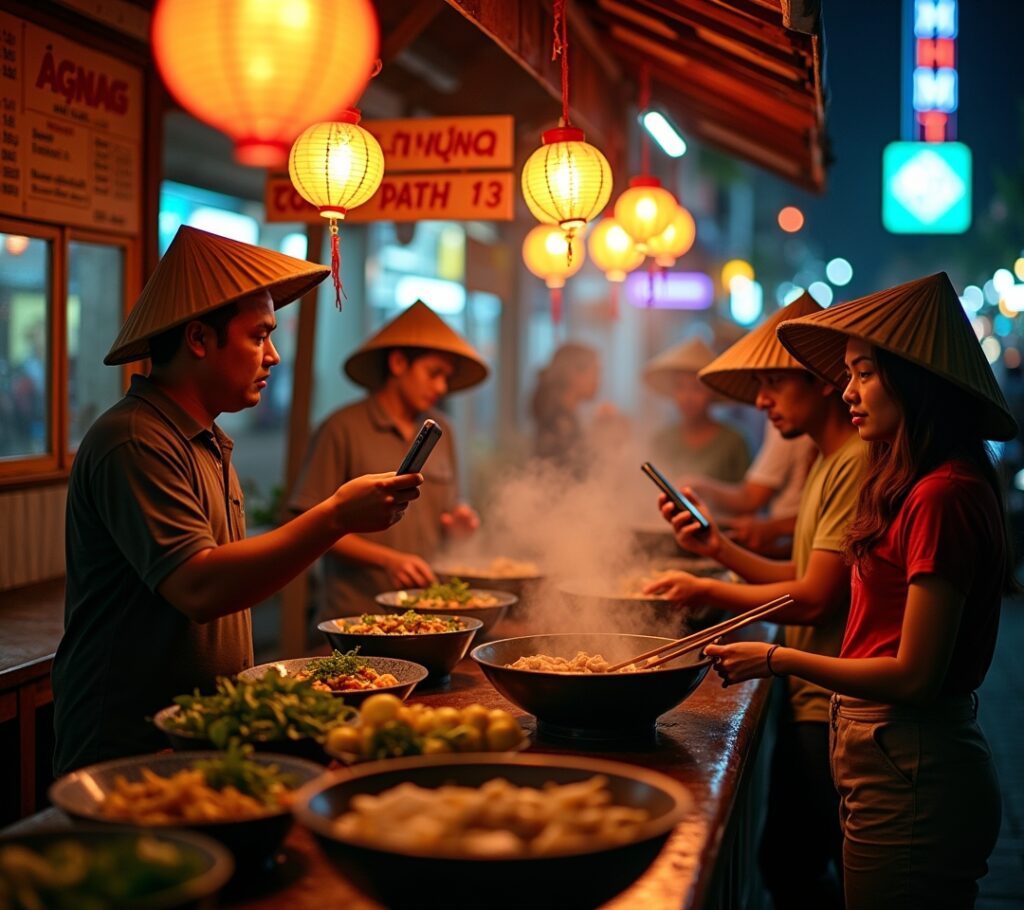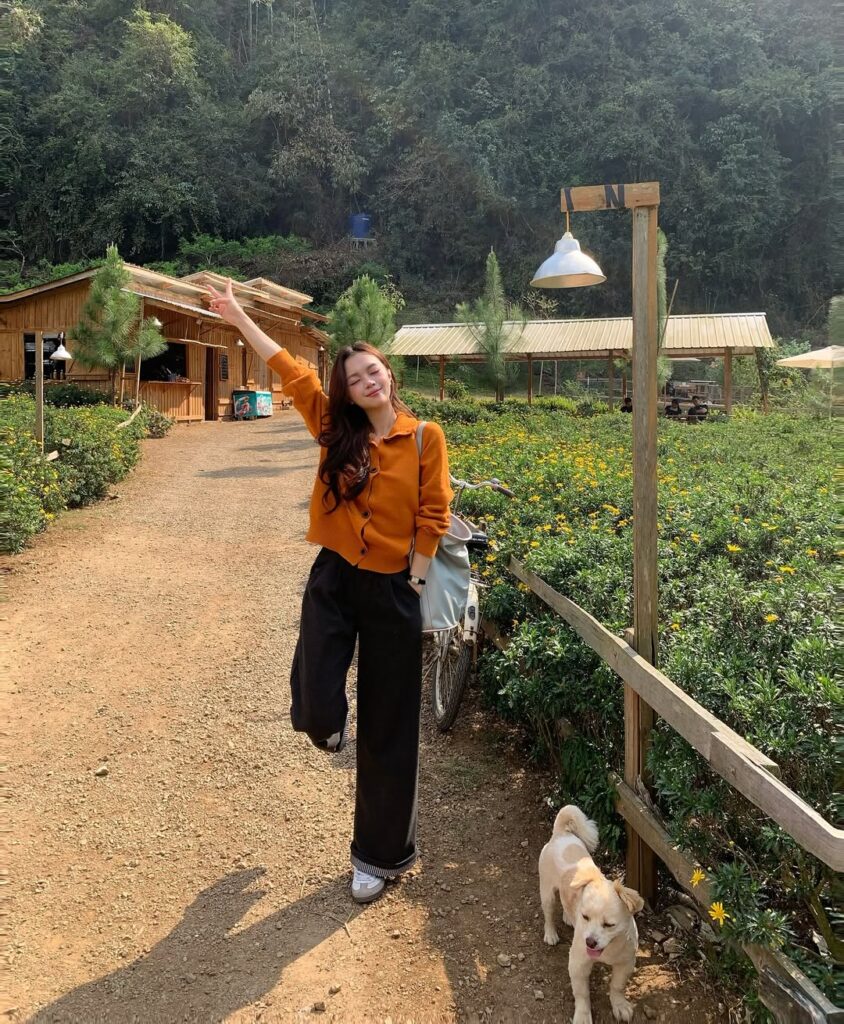Advertisements
Did you know that Vietnamese is the 6th most spoken language in the United States? Yet somehow, I found myself completely lost when I first stepped into a bustling Vietnamese restaurant in San Francisco’s Richmond District. The menu was mostly in Vietnamese, the staff spoke rapid-fire Vietnamese to each other, and I’m pretty sure I accidentally ordered fish sauce instead of spring rolls!
Language barriers in Vietnamese food culture can feel overwhelming at first. But honestly, they’re also part of what makes the experience so authentic and rewarding. Let me share how I learned to navigate these challenges – and why they’re actually not as scary as they seem.
The Reality of Vietnamese Restaurant Communication

Vietnamese restaurants often operate as family businesses where Vietnamese is the primary language. When I first encountered this, I felt intimidated and worried I’d offend someone or order something totally wrong. The truth is, most Vietnamese restaurant owners are incredibly patient and understanding about language differences.
I remember standing frozen at the counter of a pho restaurant, trying to pronounce “phở” correctly. The owner just smiled and said, “Don’t worry, we know what you mean.” That moment taught me something important – communication goes beyond perfect pronunciation.
Many Vietnamese restaurants have adapted to serve diverse communities. You’ll often find bilingual menus, picture menus, or staff who can speak both Vietnamese and English. Still, knowing some basic Vietnamese food terms can really enhance your dining experience.
Essential Vietnamese Food Vocabulary That Actually Helps
Learning a few key Vietnamese food words changed everything for me. I started with the basics: “phở” (pronounced “fuh”), “bánh mì” (bahn mee), and “chả cá” (cha ka). These aren’t just menu items – they’re conversation starters!
Here’s what I wish someone had told me earlier about Vietnamese food language:
- Tone matters, but don’t stress about it – Vietnamese is a tonal language, which means the same word can have different meanings based on how you say it
- “Cảm ơn” (kahm uhn) means thank you – This simple phrase always gets a smile
- “Không cay” (khome kai) means not spicy – Trust me, you’ll need this one
- “Nước mắm” (nook mahm) is fish sauce – The cornerstone of Vietnamese cooking
I made plenty of mistakes along the way. Once, I confidently ordered “bún chả” but pronounced it so badly that the server thought I was asking for directions to the bathroom. We both laughed about it, and she taught me the correct pronunciation.
Technology and Tools for Vietnamese Food Exploration
These days, technology makes navigating Vietnamese restaurants much easier. I always keep Google Translate handy – the camera feature can translate menu items instantly. It’s not perfect, but it gives you a good starting point.
Food apps like Yelp often have photos of popular dishes, which helps when you’re trying to communicate what you want. I’ve literally shown servers photos on my phone and pointed – it works! Sometimes the most direct approach is the best approach.
Social media has been surprisingly helpful too. Following Vietnamese food bloggers and watching YouTube videos about Vietnamese cuisine taught me pronunciation and cultural context. It’s like having a mini language lesson with every meal.
Cultural Sensitivity and Vietnamese Dining Etiquette
One thing I learned the hard way is that Vietnamese dining culture has its own rhythm and customs. Rushing through a meal or being impatient with language barriers can come across as disrespectful. Vietnamese meals are meant to be shared and savored.
When I first started exploring Vietnamese food, I made the mistake of trying to order for my whole table in broken Vietnamese. The server was polite but clearly confused. Now I know it’s better to ask for help or let someone who speaks Vietnamese take the lead when ordering for a group.
Vietnamese restaurant staff often appreciate when customers show genuine interest in their culture and language. Don’t be afraid to ask questions about ingredients or preparation methods. Most people are happy to share their knowledge, even if it requires some creative communication.
Building Bridges Through Food and Language
The beautiful thing about Vietnamese food culture is how it brings people together despite language differences. I’ve had some of my best conversations with Vietnamese restaurant owners and staff, even when we were mixing English, Vietnamese, and lots of hand gestures.
One elderly Vietnamese woman at my neighborhood restaurant started teaching me Vietnamese food terms during my regular visits. She’d point to ingredients, say the Vietnamese name, and have me repeat it. These informal language exchanges became the highlight of my week.
Food has this amazing way of transcending language barriers. When you’re sharing a steaming bowl of phở or trying to figure out how to eat bánh xèo properly, language becomes secondary to the experience.
My Favorite Vietnamese Food Adventures
Some of my most memorable Vietnamese food experiences happened because of language mix-ups, not despite them. I once accidentally ordered grilled pork intestines instead of grilled pork – and discovered I actually liked them! The server was so excited about my adventurous spirit that she brought out extra dishes to try.
Another time, I attempted to compliment the chef in Vietnamese and completely butchered the pronunciation. The whole kitchen staff came out to help me say it correctly, and we ended up having this amazing cultural exchange about regional Vietnamese cooking differences.
These experiences taught me that language barriers in Vietnamese food culture are really just opportunities in disguise. They’re chances to connect with people, learn something new, and step outside your comfort zone.
Food Bridges Every Gap
Looking back on my Vietnamese food journey, I realize that language barriers were never really the problem – my fear of them was. Vietnamese food culture is incredibly welcoming, and most people are thrilled to share their culinary traditions with curious eaters.
Remember, you don’t need perfect Vietnamese to enjoy authentic Vietnamese food. A little effort goes a long way, and mistakes are part of the learning process. The most important thing is to approach each meal with respect, curiosity, and an open mind.
Start small – maybe learn to pronounce a few basic dishes correctly or ask your server about their family’s regional specialties. Every conversation is a chance to build understanding across cultures. Want to explore more about food culture and language? Check out our other posts at Linkcheese for more culinary adventures and cultural insights!


